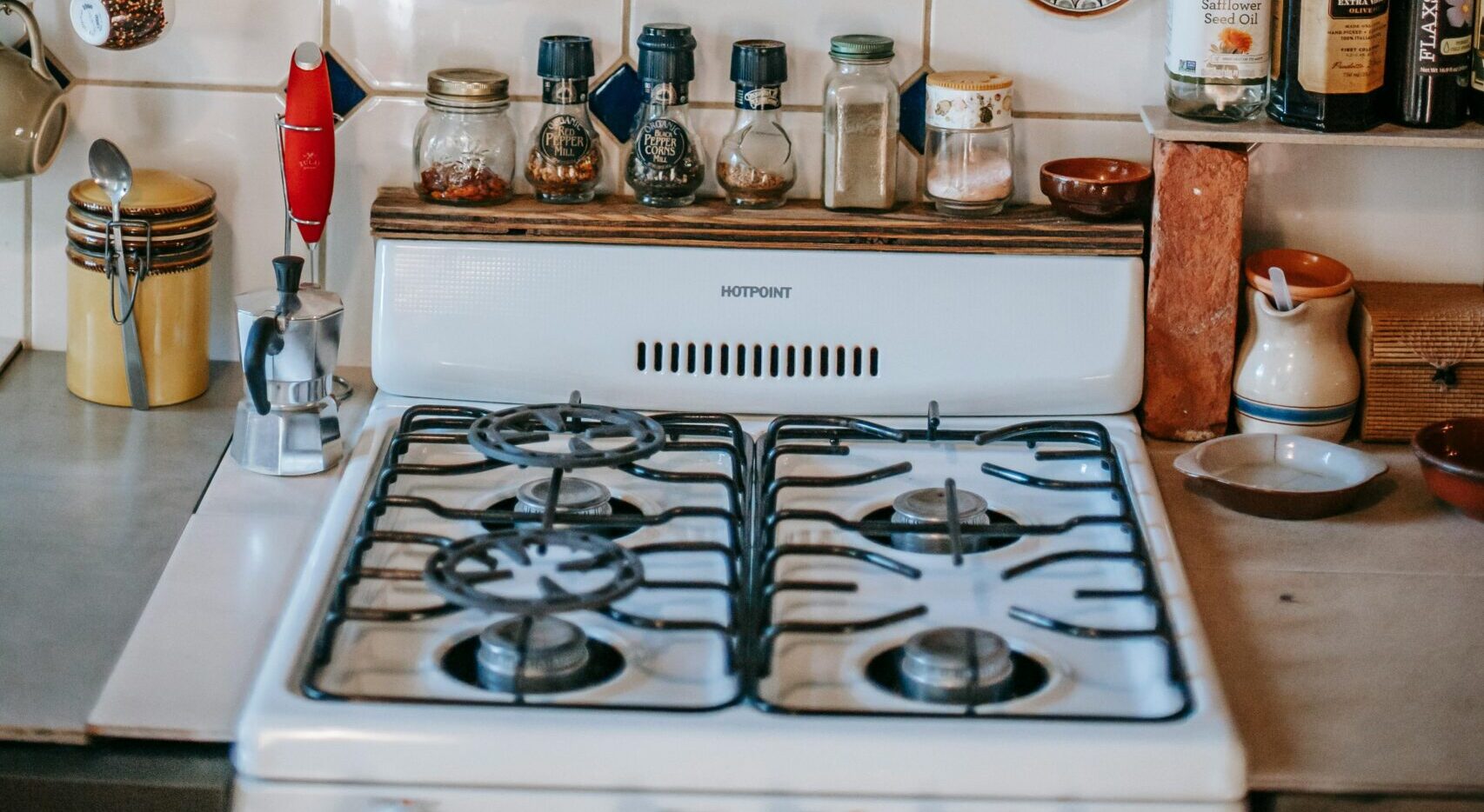
Guide for Choosing a Stovetop
Selecting the perfect stovetop for your kitchen can significantly impact your cooking experience. With various types of stovetops available, it’s essential to know the features, benefits, and drawbacks of each to make an informed decision. This guide will explore the different types of stovetops, helping you determine the best type of stovetop for your needs.
Understanding the Different Types of Stovetops
Selecting the ideal stovetop begins with understanding the available types and their distinct features. Each type offers unique benefits and is designed to cater to different cooking styles and preferences.
Gas Stovetops
Gas stovetops are a popular choice among home cooks and professional chefs alike. These stovetops use natural gas or propane to produce a flame that heats pots and pans directly. The main advantage of gas stovetops is their precise temperature control. The flame’s intensity can be adjusted instantly, providing immediate response to changes in heat settings. This feature makes gas stovetops ideal for tasks that require precise temperature regulation, such as simmering sauces or searing meats.
Gas stovetops are compatible with a wide range of cookware, including cast iron, stainless steel, and copper. However, they require a gas line connection, which may not be available in all homes. Additionally, gas stovetops can be harder to clean due to the presence of grates and burners.
Coil Electric Stovetops
Coil electric stovetops feature exposed heating elements in the form of coils. When electricity flows through the coils, they heat up and transfer heat to the cookware. Coil stovetops are durable and relatively inexpensive, making them a budget-friendly option. They also offer good heat distribution and can accommodate various cookware types. However, cleaning coil stovetops can be challenging due to the exposed elements and drip pans.
Smooth-Top Electric Stovetops
Smooth-top electric stovetops, also known as ceramic or glass stovetops, provide a sleek and modern appearance. They use radiant heat technology, where the heating elements are located beneath a smooth glass or ceramic surface. This design enhances the kitchen’s aesthetics and makes cleaning easier, as spills and splatters can be wiped away effortlessly.
Smooth-top electric stovetops offer even heating and are compatible with flat-bottomed cookware. However, they are more susceptible to scratches and cracks, so it’s important to use cookware with smooth, flat bottoms to avoid damaging the surface.
Induction Stovetops
Induction stovetops are gaining popularity due to their energy efficiency and rapid heating capabilities. Unlike traditional electric or gas stovetops, induction stovetops use electromagnetic fields to generate heat directly in the cookware. This results in faster cooking times and precise temperature control.
Induction stovetops are incredibly safe, as the surface remains cool to the touch, reducing the risk of burns. They also offer easy cleanup, as spills do not burn onto the surface. However, induction stovetops require compatible cookware, specifically magnetic materials like cast iron or certain stainless steel. Non-magnetic cookware will not work with induction technology.
Portable and Modular Stovetops
In addition to the traditional built-in stovetops, there are portable and modular options available. Portable stovetops are ideal for small kitchens, dorm rooms, or outdoor cooking. They come in various types, including portable gas burners, electric hot plates, and induction cooktops. These stovetops offer flexibility and convenience, allowing you to cook wherever you need.
Modular stovetops provide customization options, allowing you to mix and match different cooking elements to suit your needs. For example, you can combine gas burners with an induction module or a grill module. This flexibility is perfect for those who want a tailored cooking experience and enjoy experimenting with different cooking methods.
Choosing the Best Type of Stovetop for Your Needs
With a clear understanding of what types of stovetops are there, the next step is to determine which one best suits your cooking habits, kitchen layout, and lifestyle. Here are some factors to consider when making your decision:
Cooking Style and Preferences
Consider your cooking style and the types of dishes you frequently prepare. If you enjoy cooking with precise temperature control and quick adjustments, a gas stovetop might be the best type of stovetop for you. On the other hand, if you prefer consistent heating and easy cleanup, a smooth-top electric or induction stovetop could be more suitable.
Kitchen Layout and Design
The layout and design of your kitchen play a significant role in choosing the right stovetop. Gas stovetops require a gas line connection, so ensure your kitchen is equipped for this. Electric stovetops are more versatile in terms of installation, as they only need an electrical outlet. Additionally, consider the aesthetics of your kitchen. Smooth-top electric and induction stovetops offer a sleek, modern look, while gas stovetops provide a more traditional appearance.
Energy Efficiency and Cost
Energy efficiency is an important consideration, for environmental reasons and cost savings. Induction stovetops are the most energy-efficient option, as they transfer heat directly to the cookware, minimizing heat loss. Gas stovetops are generally less efficient, as some heat is lost to the surrounding air. Electric stovetops fall in between, with coil stovetops being less efficient than smooth-top models.
Safety Features
Safety is paramount in any kitchen, especially if you have young children. Induction stovetops are the safest option, as the surface remains cool to the touch, reducing the risk of burns. Gas stovetops require caution with open flames, while electric stovetops can stay hot for a while after being turned off. Consider the safety features of each type when making your decision.
Budget
Your budget will also influence your choice of stovetop. Coil electric stovetops are the most budget-friendly option, while induction stovetops tend to be more expensive due to their advanced technology. Gas and smooth-top electric stovetops fall in the mid-range price category. Additionally, consider the long-term costs, such as energy consumption and maintenance.
Get the Best Stovetop for Your Home
Choosing the right stovetop is a crucial decision that impacts your cooking experience and kitchen functionality. By understanding the types of stovetop burners available and considering other factors, you can determine the best type of stovetop for your needs. Whether you opt for the precision of gas, the consistency of electric, or the efficiency of induction, investing in the right stovetop will elevate your culinary adventures and enhance your kitchen’s appeal.
